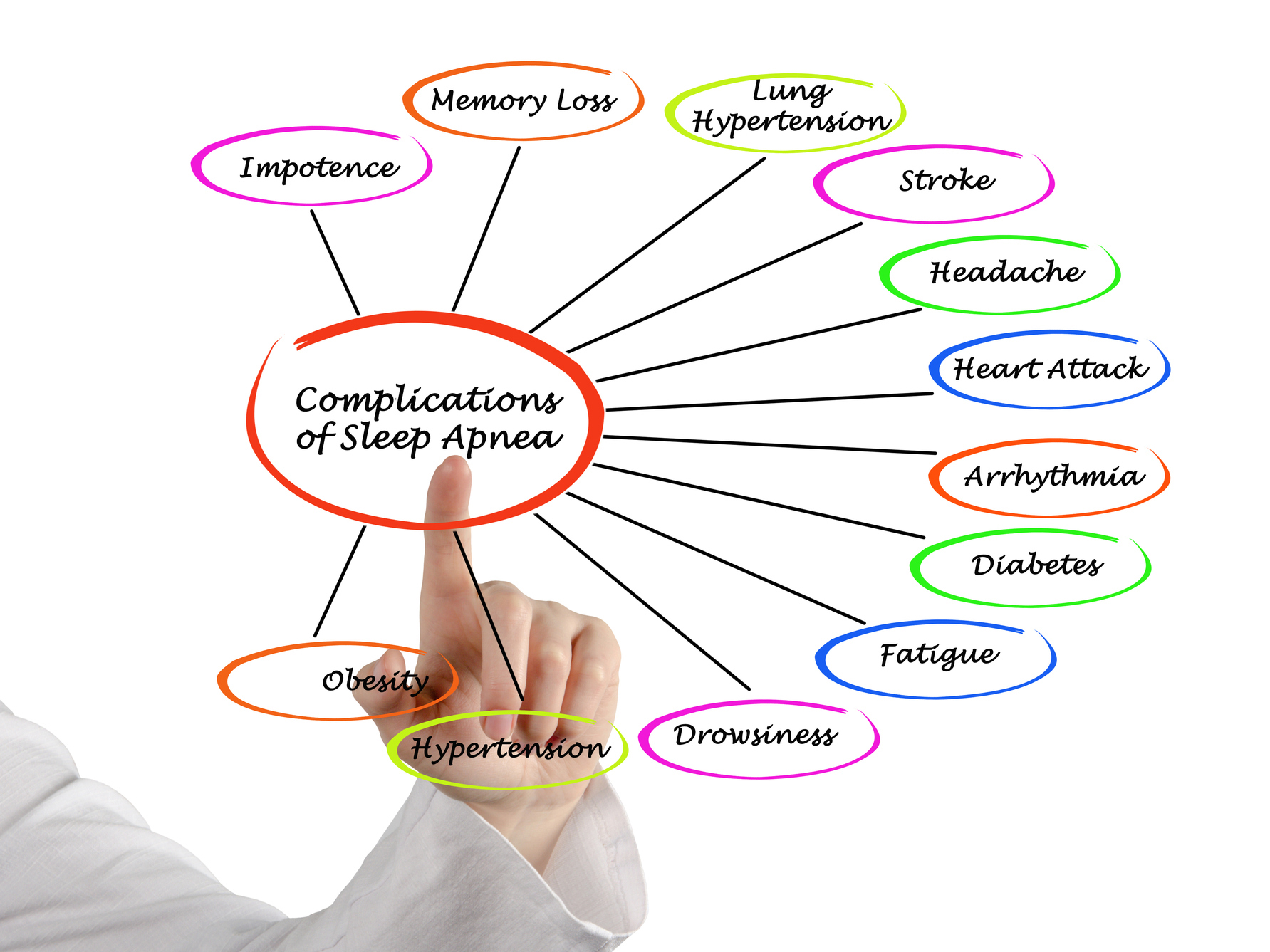Get Easy Health Digest™ in your inbox and don’t miss a thing when you subscribe today. Plus, get the free bonus report, Mother Nature’s Tips, Tricks and Remedies for Cholesterol, Blood Pressure & Blood Sugar as my way of saying welcome to the community!
The strange sign you have sleep apnea

Sleep apnea is a serious condition. If left untreated, it can put you at risk for depression, heart disease and premature death, among other complications.
The problem is, most sleep apnea symptoms happen while you’re sound asleep. So, how do you know if you have it?
If you have a spouse or partner, they can tell you if you’re snoring or breathing weird — two telltale sleep apnea symptoms. But if you’re single, your chances of finding out you have sleep apnea are slimmer.
There are some sleep apnea symptoms you can watch for during your waking hours, like morning headaches, daytime sleepiness and irritability. But these are easy to miss or attribute to something else.
Luckily, a new study just identified a sleep apnea warning sign you can see clearly every time you look in the mirror — floppy eyelids.
Floppy eyelids and sleep apnea
Researchers from Loyola University recently found that an eyelid condition may be a sign of sleep apnea.
Their study was small. It only included 32 people. But their findings deserve your attention (and more investigation) since sleep apnea can be so hard to detect.
Researchers found that more than half of people with sleep apnea have floppy, rubbery eyelids, an ailment known as lax eyelid condition.
And these findings weren’t a coincidence. A small 2010 study found that people with rubbery upper eyelids were 12.5 times more likely to have sleep apnea. So, there’s clearly a connection between the two. But why?
Well, one theory is that sleep apnea is caused by low-grade inflammation. Since inflammation also screws with elastin, the protein that helps your skin keep its shape, it could easily cause a floppy eyelid or two.
Researchers who performed the study hope that doctors and ophthalmologists will keep their eyes peeled for floppy eyelids and have those patients screened for sleep apnea symptoms. Since sleep apnea is a common condition, this type of intervention could improve a lot of people’s health and maybe even save some lives.
“Obstructive sleep apnea is a severely underdiagnosed disease, and without treatment leads to increased morbidity and mortality,” researchers said. “It is the duty of today’s ophthalmologist to be diligent in making the diagnosis of lax eyelid syndrome in the ophthalmology clinic. They are in the unique position to identify patients at risk for obstructive sleep apnea and address this critical public health problem.”
How do you know if you have floppy eyelids?
Floppy eyelids should be easy to spot. One or more eyelid will look like it’s lost its elasticity and will droop downwards. You may also have problems with eye irritation, and your eyelids may even flip inside out when they rub up against your pillow during sleep.
If you notice something’s up with your eyelids, you may want to head to a sleep specialist to get tested for sleep apnea. And you should definitely head to a specialist if you also have any other sleep apnea symptoms, like:
- Loud snoring
- Episodes where you stop breathing during sleep
- Frequent awakenings during the night…especially if they’re accompanied by shortness of breath
- Waking up with a dry mouth or a sore throat
- Morning headaches
- Insomnia
- Daytime sleepiness
- Irritability
- Concentration issues
- Heartburn
If you do receive a sleep apnea diagnosis, you may need to invest in a continuous positive airway pressure (CPAP) machine, a machine that blows compressed air into your airway while you sleep to keep it open.
But if your sleep apnea symptoms are mild, you can try lifestyle changes first, like:
- Losing weight (if you’re overweight)
- Exercising
- Avoiding alcohol, tranquilizers and sleeping pills
- Sleeping on your side or stomach instead of your back
- Using nasal spray, nasal decongestants or antihistamines to keep your nose from getting stuffy
Editor’s note: There are numerous safe and natural ways to decrease your risk of blood clots including the 25-cent vitamin, the nutrient that acts as a natural blood thinner and the powerful herb that helps clear plaque. To discover these and more, click here for Hushed Up Natural Heart Cures and Common Misconceptions of Popular Heart Treatments!
Sources:
- Floppy eyelids may be sign of sleep apnea, study finds — MedicalXpress. Retrieved June 20, 2018.
- Sward, et al. “Lax eyelid syndrome (LES), obstructive sleep apnea (OSA), and ocular surface inflammation.” — The Ocular Surface, 2018.
- Sleep Apnea — Mayo Clinic. Retrieved June 20, 2018.
- What you need to know about sleep apnea — Medical News Today. Retrieved June 20, 2018.
- Floppy Eyelid Syndrome May Warn of Apnea — MedPage Today. Retrieved June 20, 2018.
- Floppy eyelid syndrome — American Academy of Ophthalmology. Retrieved June 20, 2018.













